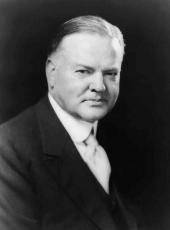MORTALITY in the United States during the year just ended was as low as in 1930 and definitely lower than in the 2 previous years. This fact is indicated by records already available. In 82 large cities the mortality rate from all causes for 1931 was 11.7 per 1,000 against 11.9 in 1930, 48 cities showing a decrease, and 28 an increase, and 6 remaining the same. Among 75 million industrial policyholders the death rate in 1931 was the same as in 1930 and appreciably below the 1928 and 1929 rates. Available data from the entire population of a number of States for the first three quarters of the year confirm these indications.
Of special interest is the last quarter of 1931, since it includes the beginning of winter, when mortality is commonly experienced. Records for this last quarter in the group of 82 large cities, as compared with the same period in the 3 preceding years, indicate that the mortality at the beginning of the winter of 1931-32 has continued on a very favorable level, the rate being only 10.7 per 1,000 as compared to 11.4, 12.0, and 13.2 in the last quarters of 1930, 1929, and 1928, respectively. Industrial policyholders likewise manifest a low mortality during the last 3 months of 1931, the rate in this group being 8.7 per 1,000 during that period as compared to 9.0, 9.1, and 9.4 during the last quarter of 1930, 1929, and 1928, respectively.
More precise measures of the trend of mortality during the past year are not yet available, for instance, with respect to specific causes or in particular age groups. Data appear to indicate, however, a continuation of the downward trend of mortality from pulmonary tuberculosis and many other causes.
Infant mortality during the past year, based on the number of deaths under 1 year of age per 1,000 live births, in 70 large cities, was definitely lower than in any preceding year on record, the rate being 55.8 against 58.1 for 1930, the most favorable preceding year. This especially creditable showing has persisted during the last weeks of the year, the rate for the final quarter being 46.6 against an average of 56.9 for the corresponding period in the 3 preceding years and against 51.9 for the same period of 1929, the lowest previous rate.
Responses from State, city, and local health officers to inquiries regarding health conditions generally confirm the impression given by the data quoted above that 1931 has been a favorable year. While in certain local areas reports indicate an increase in malnutrition among children, the reports in general for 1931 show an improvement in this condition. Many more people are asking for charity medical services and this gives the impression at first that there is an increase in sickness, but to counterbalance this there are many reports of decreases in paid medical practice. To meet this added burden upon free clinics and hospitals, there has been an increase in local contributions for such purposes.
Note: The statement was based on statistics in Surgeon General Hugh S. Cumming's letter of January 2, 1932. The statistics referred to in his letter are in the form of charts and tables which are available for examination at the Herbert Hoover Presidential Library. Surgeon General Cumming's letter follows:
My dear Mr. President:
I am very glad to be able to report to you that despite the economic depression throughout this country during the past year we have every reason to be thankful that in the matter of the most important wealth of the people, their health, the country has never been as prosperous in its history as during the year 1931, so far as we are able to ascertain by statistics which are attached hereto for your information, and which include report for the whole year with the exception of last week.
I feel that this gratifying condition has been due not only to the absence of unpreventable epidemic diseases but in large part to the aroused interest of people to the importance of looking out for health during the year and to increased efficiency of the State and local health authorities, together with devoted self-sacrifice of the medical profession who have upheld the best traditions of the profession in furnishing their services regardless of possible remuneration.
I am not unmindful of the apparent increase in sickness due to the largely increased call upon free dispensary and hospital services, but on the other hand reports which have reached me from physicians engaged in private practice all over the country indicate that the increase in attendance at free hospitals and dispensaries is in large measure offset by decrease in pay practice of private physicians.
Respectfully,
HUGH S. CUMMING,
Surgeon General
[The President, The White House, Washington ]
Herbert Hoover, White House Statement on Domestic Health Conditions. Online by Gerhard Peters and John T. Woolley, The American Presidency Project https://www.presidency.ucsb.edu/node/207072

